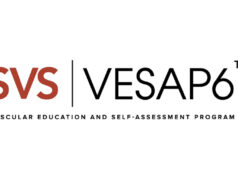
The Society for Vascular Surgery (SVS) and the Society of Thoracic Surgeons (STS) recently published a joint document on reporting standards for type B aortic dissection (TBAD). The purpose of this document was to establish a standardized language for presentation, anatomy, procedural and postoperative follow-up in manuscripts dealing with patients treated for TBAD. Both the SVS and STS were represented by seven members, including co-chairs from each society.
The document is categorized according to the various stages of the patient’s management, from presentation to long-term follow-up. The chronicity classification now ranges from hyperacute to chronic, whereby chronic dissections are now considered as patients with more than 90 days spanning from their initial presentation.
Among the many changes to convention and suggestions, the most pivotal contribution of this work is the introduction of the SVS/STS Dissection Classification System. This classification scheme now allows the aorta to be described in detail and with ease, while keeping in mind the novel operative techniques today, including endovascular management. The classification now uses entry tear location to determine a type A vs.
a type B dissection, while subscripts denote the proximal and distal extent of the dissection process, including areas of intramural hematoma (see Figure 1).
The patient’s presentation in terms of acuity has been categorized into three varieties: uncomplicated (patients without high-risk criteria), high risk and complicated (rupture and malperfusion). It was felt the use of the term uncomplicated in the past was variable and loosely applied in high-risk situations where comparisons could not be accurately made from one manuscript to another. Hence, a third high-risk category was defined such that investigations on operative vs. conservative management in these patients can be better communicated and compared to glean accurate clinical guidelines.
Patency of the false lumen was also adjusted to reference the entire aorta in its description.
A patent false lumen is defined as flow present throughout the entire aortic false lumen on the arterial phase or delayed contrast imaging. Partial thrombosis is defined as clot within the aortic false lumen but with a residual patent flow channel on the arterial phase or delayed contrast imaging. Complete thrombosis is defined as complete thrombosis of the aortic false lumen on arterial and delayed-phase imaging.
Further descriptions of the false lumen are sources of persistent flow. What was commonly referred to as an endoleak, a term used in the context of endovascular aneurysm repair, is now “entry flow,” which better describes—physiologically—the various sources of flow back into the false lumen.
There are only three types of entry flow described: types 1, 2 and R. Type 1 has two varieties representing flow into the false lumen from proximal (a) and distal (b) seal zones. Invariably, type 1b entry flow represents a stent graft-induced entry tear (SINE); type 2 entry flow via arch vessel branches (innominate, carotid, subclavian) or thoracic bronchial/intercostal arteries into the false lumen; and type R entry flow from intercostal arteries, visceral or renal arteries, lumbar arteries, iliac branches or septal fenestrations (see Figure 2).
Aortic remodeling was also a buzzword that needed refinement in definition. Changes in the aorta over time can be defined as positive or negative aortic remodeling and must describe the entire aorta—not just the area stent grafted. Positive aortic remodeling is defined as either false lumen reduction in maximal diameter or volume and no growth in total aortic diameter or volume; true lumen expansion in maximal diameter or volume and no growth in total aortic diameter or volume; or total aortic maximal diameter reduction with variable changes in true and false lumen diameters. Negative aortic remodeling would represent the opposite behaviors, or a failure to demonstrate any of these descriptions.
Last but by no means least, the document covers end-organ ischemia (spinal, visceral, stroke), etiologies, outcome and complication reporting, with suggestions on imaging protocols.
The document was ultimately vetted by both societies along with its members during a public feedback period as well as by the Food and Drug Administration before final approval.
Joseph V. Lombardi is a professor and chief of vascular surgery at the Cooper Medical School of Rowan University in Camden, New Jersey, where he is also director of the Cooper Aortic Center.











